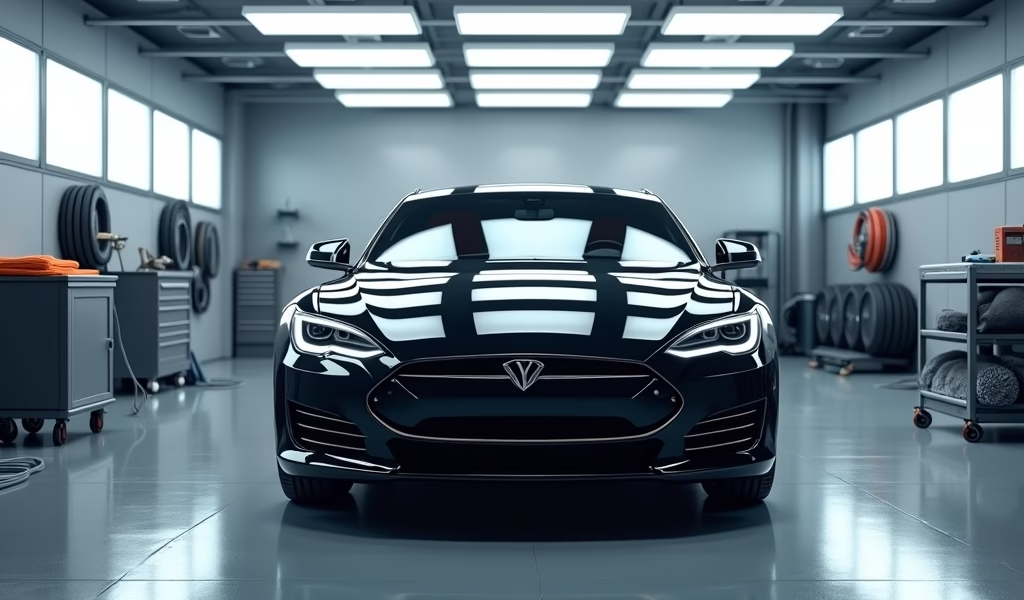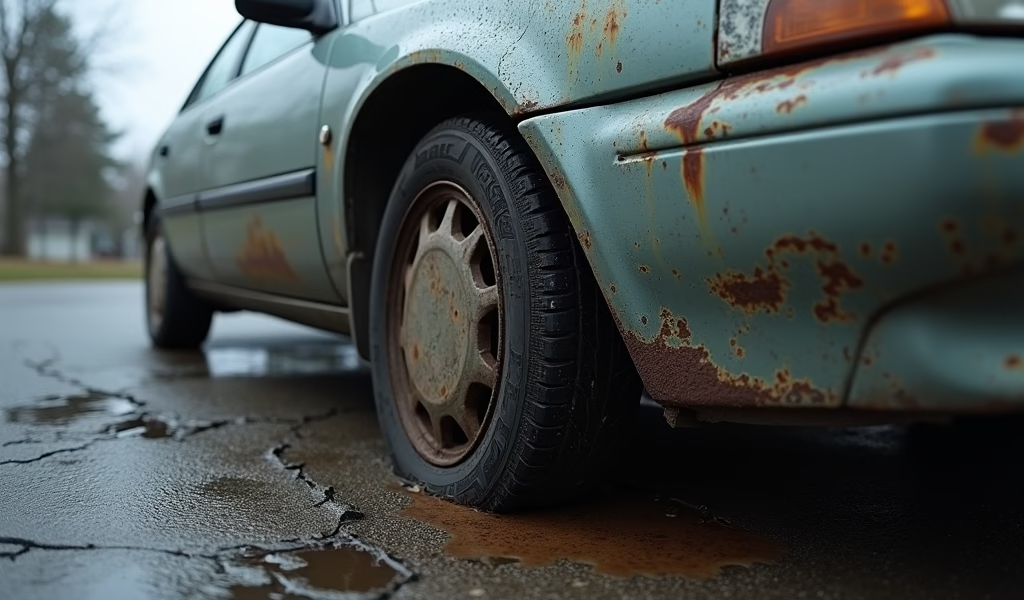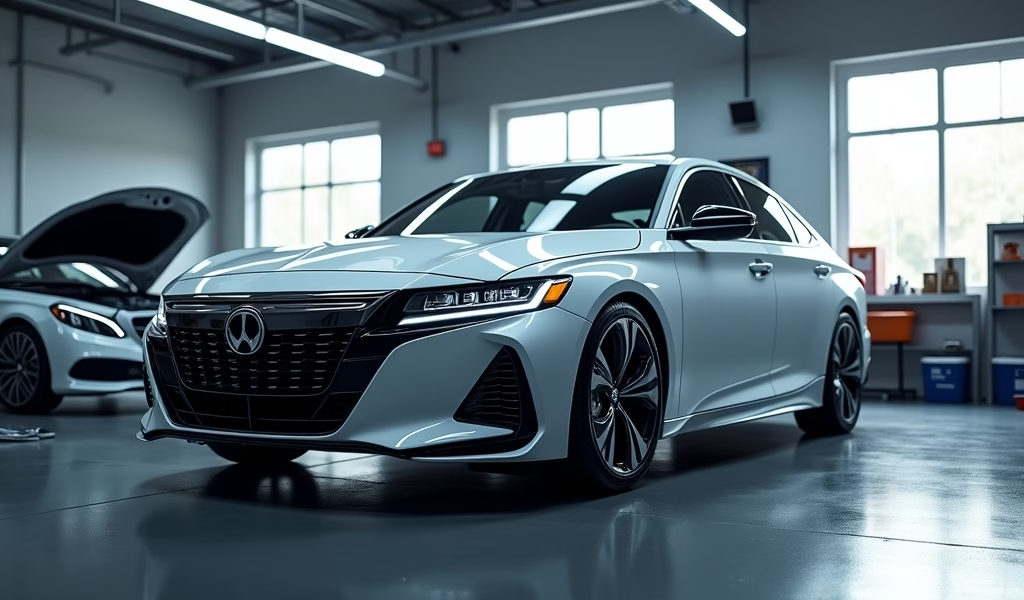Overview
This article outlines seven essential car care treatments that protect your vehicle’s value and performance, including regular fluid maintenance, paint protection, undercarriage care, interior preservation, tire maintenance, professional detailing, and electronic system upkeep. The author emphasizes that these treatments should be viewed as investments rather than expenses, as they significantly impact a vehicle’s longevity, appearance, and resale value when implemented early in ownership.
Table of Contents
- Smart Car Buying: Beyond the Price Tag
- Regular Oil Changes: The Heartbeat of Your Engine’s Longevity
- Paint Protection: Your Car’s Shield Against the Elements
- Undercarriage Protection: The Hidden Guardian of Your Investment
- Interior Protection: Preserving Your Comfort Zone
- Tire Care: Where Performance Meets Safety
- Professional Detailing: More Than Just a Pretty Finish
- Electronic Systems: Maintaining Your Car’s Brain
- Conclusion: Driving Into a Well-Maintained Future
- Frequently Asked Questions
Smart Car Buying: Beyond the Price Tag
Have you ever run your hand along the pristine finish of a new car and wondered how to keep that showroom sparkle for years to come? That magical new car smell and flawless appearance aren’t maintained by chance—they’re preserved through deliberate care. As a mechanic who’s witnessed thousands of vehicles age both gracefully and prematurely, I can tell you that your car buying journey is just the beginning of a long-term relationship.
When investing in a vehicle, most buyers focus exclusively on price negotiation and financing terms. While these aspects are certainly important (and you should definitely check out our car loan calculator with interest to understand your financing options), they’re only part of the equation. The maintenance decisions you make in the first few months of ownership will dramatically impact your vehicle’s performance, appearance, and resale value for years to come.
Think of these seven essential car care treatments as investments rather than expenses—each one protecting your vehicle from specific threats while enhancing your driving experience. When was the last time you considered the long-term protection plan for one of your largest investments?
Regular Oil Changes: The Heartbeat of Your Engine’s Longevity

Your engine oil is more than just a lubricant—it’s the lifeblood circulating through your engine’s heart. With each pump through the system, fresh oil carries away heat, neutralizes acids, and suspends contaminants that would otherwise cause devastating wear. The difference between an engine with clean oil and one running on degraded fluid isn’t just theoretical—it’s audible. That subtle, satisfying purr of a well-maintained engine speaks volumes about what’s happening inside.
Most modern vehicles recommend oil changes every 5,000-10,000 miles, but these intervals aren’t one-size-fits-all. Your driving habits matter tremendously. Short trips that don’t allow the engine to fully warm up, dusty conditions, or frequent heavy loads all demand more frequent changes. Can you hear that slight ticking when your engine starts on cold mornings? That could be your car whispering for fresh oil.
Beyond engine oil, your vehicle relies on several critical fluids:
- Transmission fluid: Ensures smooth, responsive shifts and prevents internal transmission damage
- Brake fluid: Hygroscopic by nature, it absorbs moisture over time, potentially compromising your stopping power
- Coolant: Prevents freezing in winter, boiling in summer, and fights corrosion year-round
- Power steering fluid: Maintains that smooth, responsive steering feel you love
According to research from the Car Care Council, 22% of vehicles have low or dirty engine oil, leading to increased engine wear and reduced fuel economy. When did you last check your dipstick? That moment of peace when you verify your oil level is proper and clean is worth far more than the few seconds it takes.
Paint Protection: Your Car’s Shield Against the Elements
Your vehicle’s paint isn’t just about aesthetics—it’s the first line of defense against an onslaught of environmental assaults. Bird droppings contain acids that can etch through clear coat in hours. Tree sap bakes into a stubborn residue under the summer sun. Road salt creeps into microscopic scratches, initiating corrosion that spreads like a disease.
The modern paint protection arsenal gives you powerful options to shield your investment:
- Traditional wax: The warm, deep shine of carnauba wax not only looks stunning but also repels water and provides a sacrificial barrier against contaminants. That satisfying beading effect when rain hits a freshly waxed surface isn’t just beautiful—it’s protection in action.
- Ceramic coating: These silicon dioxide-based formulations bond at a molecular level with your paint, creating an invisible shield with remarkable hardness. The slick, glass-like surface resists contamination and makes maintenance dramatically easier.
- Paint protection film: This clear, self-healing urethane layer absorbs impacts that would otherwise chip your paint. The peace of mind when driving behind a gravel truck is worth every penny invested in this invisible armor.
When considering a new vehicle purchase, negotiating a high-quality protection package from the dealership can often make financial sense. Alternatively, independent detailers frequently offer more comprehensive options at competitive prices. Has the satisfaction of running your fingers across your car’s perfectly smooth finish faded? Perhaps it’s time for paint protection.
Undercarriage Protection: The Hidden Guardian of Your Investment
While you’re admiring your vehicle’s gleaming bodywork, an invisible battle rages underneath. The undercarriage endures a brutal assault from road debris, moisture, salt, and chemicals—all conspiring to compromise structural integrity through relentless corrosion. This isn’t merely an aesthetic concern; it’s a safety and longevity issue that deserves serious attention during your initial ownership period.
The tactile experience of getting underneath your vehicle and finding clean, protected metal instead of scaling rust brings a satisfaction that’s hard to describe. It’s the physical evidence that your foresight is paying dividends in extended vehicle life.
Consider these protection options:
- Oil-based undercoatings: These penetrate existing surface rust and create a moisture-resistant barrier, perfect for vehicles already exposed to the elements
- Rubberized sealants: Creating a thick, durable shield that absorbs impacts from road debris while blocking moisture
- Electronic rust inhibitors: Using low-voltage current to prevent the electrochemical process of corrosion
This treatment proves especially crucial if you live in the salt belt states where winter road treatments accelerate corrosion dramatically. When was the last time you looked underneath your car? That peek underneath might reveal the early signs of a problem you can still prevent.
Interior Protection: Preserving Your Comfort Zone
Your vehicle’s cabin is where you’ll spend hundreds of hours each year, enveloped in materials constantly battling UV exposure, temperature fluctuations, spills, and everyday friction. Stepping into a well-protected interior engages all your senses—the supple feel of conditioned leather under your fingers, the clean scent of properly maintained surfaces, and the visual satisfaction of materials that have defied the aging process.
Effective interior protection includes:
- Leather treatments: Quality conditioners that prevent the leather’s natural oils from evaporating, maintaining that luxurious suppleness while preventing cracking
- Fabric protection: Treatments that create an invisible barrier, allowing liquid spills to bead rather than soak in, giving you precious seconds to blot rather than scrub
- UV protectants: Specialized formulas that block the sun’s damaging rays from breaking down dashboard materials and fading upholstery
- Window tinting: Beyond privacy, quality ceramic tint blocks up to 99% of UV radiation, protecting both your interior and your skin during long drives
The difference between a five-year-old vehicle with protected surfaces and one left to the elements is dramatic. Taking a comprehensive approach to interior protection during the initial ownership period means you’ll enjoy that “almost new” feeling for years rather than months. Does the crisp, clean smell still greet you when you open your car door, or has it been replaced by something less inviting?
Tire Care: Where Performance Meets Safety

Your tires form the critical connection between two tons of engineering and the road beneath. This humble rubber compound determines your braking distance, handling precision, ride comfort, and even fuel economy. The satisfying grip felt through the steering wheel during a confident corner isn’t magic—it’s the result of proper tire care.
An effective tire maintenance routine includes:
- Monthly pressure checks: That subtle vibration you feel at highway speeds might be underinflated tires quietly compromising your safety and efficiency
- Regular rotation: Promoting even wear patterns that maximize tire life and performance
- Alignment verification: When your vehicle tracks straight without steering correction on a level road, that’s proper alignment preserving your tires and enhancing safety
- Seasonal evaluations: The reassuring hum of appropriate tires for the conditions—whether all-seasons in mild climates or dedicated winter tires where snowfall is common
Before purchasing a new vehicle, consider negotiating a tire protection plan that covers road hazard damage. These plans often pay for themselves with a single replacement. When was the last time you really looked at your tires? The sidewall cracking and uneven wear patterns tell stories about driving habits and maintenance practices that might surprise you.
If you’re in the market for a used vehicle, our comprehensive used car inspection checklist helps ensure tire condition and many other critical systems are thoroughly evaluated before purchase.
Professional Detailing: More Than Just a Pretty Finish
While regular washing maintains basic cleanliness, professional detailing elevates your vehicle’s condition to an entirely different level. The sensory experience of sliding into a freshly detailed car engages everything from the improved clarity of your windshield to the clean, fresh scent that replaces the accumulated odors of daily use. This isn’t merely vanity—it’s preventive maintenance that addresses issues before they become permanent damage.
A comprehensive detailing package typically includes:
- Clay bar treatment: This tactile process removes embedded contaminants that regular washing can’t touch, creating a smooth-as-glass surface you can literally feel
- Paint correction: The visual transformation when swirls and minor scratches disappear under proper polishing is nothing short of remarkable
- Interior deep cleaning: The extraction of deeply embedded dirt and elimination of bacteria creates a healthier, more pleasant environment
- Engine bay cleaning: Beyond aesthetics, removing built-up grime helps identify developing leaks and keeps components running cooler
While professional services deliver the most dramatic results, maintaining that showroom condition between appointments requires quality products and regular attention. The pride that comes from maintaining your vehicle’s appearance pays dividends in both personal satisfaction and preserved value. When sunlight catches your paint just right, does it reveal a masterpiece or a reminder of neglect?
Electronic Systems: Maintaining Your Car’s Brain
Modern vehicles are rolling computers, with dozens of electronic control units orchestrating everything from engine timing to climate preferences. These sophisticated systems require their own form of preventive care, especially as vehicles become increasingly software-dependent. That reassuring chime when your safety systems initialize isn’t just a sound—it’s confirmation that the electronic heart of your vehicle is functioning properly.
Electronic system maintenance includes:
- Software updates: Just as your smartphone performs better with current software, your vehicle’s systems benefit from manufacturer improvements and fixes
- Battery health monitoring: The frustration of a no-start condition often begins with subtle warning signs that proper monitoring can identify
- Sensor cleaning: Those parking sensors and cameras that enhance safety depend on physical cleanliness to function properly
- Diagnostic scanning: Regular electronic health checks can identify developing issues before they trigger warning lights or affect performance
Before purchasing a vehicle, research its electronic reliability history and available warranty options for these sophisticated systems. According to J.D. Power research, infotainment systems consistently rank among the most problematic vehicle features. Do you notice your vehicle’s touchscreen responding as crisply as when it was new, or has it developed hesitation that might indicate deeper issues?
Conclusion: Driving Into a Well-Maintained Future
The seven essential car care treatments we’ve explored represent more than just maintenance items—they form a comprehensive protection strategy for one of your most significant investments. By addressing each of these areas early in your ownership experience, you create a foundation for years of trouble-free driving pleasure while preserving both function and value.
The sensory satisfaction of a well-maintained vehicle goes beyond financial considerations. It’s the confidence you feel when your car starts instantly on the coldest morning. It’s the pride when your five-year-old vehicle still turns heads. It’s the peace of mind knowing you’ve done everything possible to protect your investment and ensure your safety.
As you consider your next vehicle purchase, remember that the price on the window sticker is just the beginning of the story. The true cost—and true value—of ownership unfolds in the years that follow, largely determined by how well you implement these essential care strategies from day one. Your vehicle takes care of you on every journey; returning that favor through proper care creates a partnership that can last for hundreds of thousands of miles.
When was the last time you felt truly proud of your vehicle’s condition? Perhaps today is the perfect moment to commit to a maintenance strategy that delivers both practical benefits and genuine enjoyment for years to come.
Frequently Asked Questions
How often should I really change my oil if my car’s manual says every 10,000 miles?
Follow your manufacturer’s recommendations for normal driving conditions. Consider more frequent changes (every 5,000 miles) if you regularly drive in severe conditions like extreme temperatures, dusty environments, or primarily short trips.
Is ceramic coating worth the high cost compared to regular waxing?
Ceramic coating provides superior protection and longevity, typically lasting 1-5 years compared to wax’s 3-6 months. For new or high-value vehicles you plan to keep long-term, the investment often pays for itself in protected resale value and reduced maintenance time.
What’s the most important maintenance item that new car owners typically overlook?
Tire pressure monitoring is frequently neglected despite its impact on safety, fuel economy, and tire lifespan. Check your pressures monthly and before long trips, adjusting to the manufacturer’s specifications listed on your doorjamb sticker.
Should I purchase an extended warranty when buying a new car?
Extended warranties make most sense for vehicles with complex electronics or those known for expensive repairs after the factory warranty period. Research the specific vehicle’s reliability history and compare the warranty cost against the average repair expenses it would cover.
How do I protect my car’s paint if I don’t have a garage?
Invest in a high-quality car cover designed for your specific climate conditions. Additionally, apply durable paint protection like ceramic coating or paint protection film, and try to park in shaded areas away from trees when possible.


Pingback: How to Buy a Car & Maintain It: 5 Tips - knowsyourcar.com